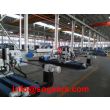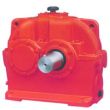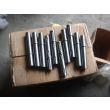H4-HV-19-A rcumferential speed all of the points of these co Helical gear Reduction Box H4
In stock
SKU
H4-HV-19-A
$74,464.29
Flender/Flender Gear Units/Helical gear Reduction Box H4
iciency measures is as follows: Supply Side (Energy Generation) Wastewater treatment facilities should be encouraged to implement biogas energy production projects, and incentives should be provided for this purpose Similarly, water supply and distribution projects should investigate the feasibility of
projects, and incentives should be provided for this purpose Similarly, water supply and distribution projects should investigate the feasibility of  mini- hydropower generation in water distribution systems. Feasibility of using alternative renewable energy technologies with relation to initial capital costs,
mini- hydropower generation in water distribution systems. Feasibility of using alternative renewable energy technologies with relation to initial capital costs,  site conditions, specific climate conditions and return-on-investment should be investigated. Financial incentives should be provided for such investigations and projects.
site conditions, specific climate conditions and return-on-investment should be investigated. Financial incentives should be provided for such investigations and projects.  Demand Side Management (Energy Conservation) Energy efficiency should form major criterion when planning new or upgrading existing water supply and sanitation projects, an funding programs should use specific targets in the decision- making process. Toolboxes should be developed to provide water and wastewater treatment plant supervisors and process controllers with technical solutions and support for improving energy efficiency in their facilities. As water demand management programs also result in energy savings, energy efficiency should be included in water services providers wa ter demand management and water conservation programs. Implementation of water supply and sanitation processes that use no energy, should be actively encouraged Development of new or alternative wastewater treatment processes and systems (both centralized and decentralized) should aim towards low-energy processes, especially regarding the high energy requirements for aeration in biological systems. 1-3 Regulatory and Incentives The guidelines and best practices should be used as basis for development of energy efficiency and energy conservation targets for the South African water sector. These targets can then be implemented, encouraged and regulated throug the Department of Water and Sanitation (DWS) Blue Drop
Demand Side Management (Energy Conservation) Energy efficiency should form major criterion when planning new or upgrading existing water supply and sanitation projects, an funding programs should use specific targets in the decision- making process. Toolboxes should be developed to provide water and wastewater treatment plant supervisors and process controllers with technical solutions and support for improving energy efficiency in their facilities. As water demand management programs also result in energy savings, energy efficiency should be included in water services providers wa ter demand management and water conservation programs. Implementation of water supply and sanitation processes that use no energy, should be actively encouraged Development of new or alternative wastewater treatment processes and systems (both centralized and decentralized) should aim towards low-energy processes, especially regarding the high energy requirements for aeration in biological systems. 1-3 Regulatory and Incentives The guidelines and best practices should be used as basis for development of energy efficiency and energy conservation targets for the South African water sector. These targets can then be implemented, encouraged and regulated throug the Department of Water and Sanitation (DWS) Blue Drop| Model Type | Helical gear Reduction Box H4 |
|---|---|
| Gear Type | Helical Gear |
| Weight (kg) | 3475.000000 |
| Ratio Range | 1 : 100…355 |
| Low Speed Output | Hollow shaft with keyway acc. to DIN 6885/1 |
| Nominal Torque | 300000 Nm |
| Mounting Arrangements | Vertical mounting position |
| Manufacturer | Flender Oy |
| Country of Manufacture | Armenia |
| Data Sheet & Drawings | H4-HV-19-A rcumferential speed all of the points of these co Helical gear Reduction Box H4 |








